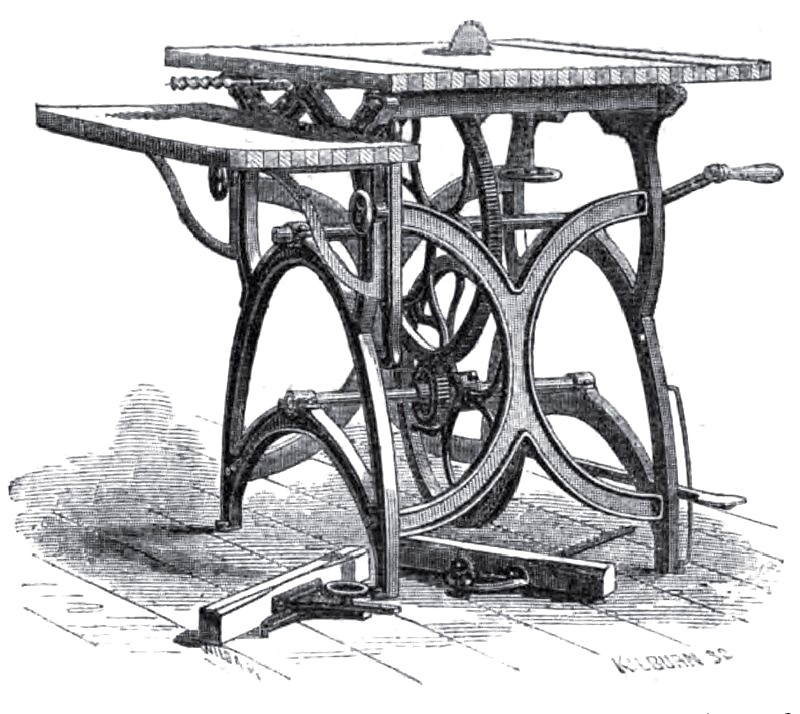|
Title: |
1872 Article-Reed & Bowen, Combined Hand & Foot Circular Sawing Machine |
|
Source: |
Scientific American, V 27 #10, 07 Sep 1872, pg. 143 |
|
Insert Date: |
3/12/2013 10:23:51 AM |
COMBINED HAND AND FOOT CIRCULAR SAWING MACHINE
The annexed engraving represents Marston’s combined hand and foot power circular sawing machine, which is an ingenious device that may be applied to a variety of uses.
The driving shaft of the machine, as will be seen from the engraving, is centrally situated, and is worked by either a crank or treadle. The driving gear attached to this shaft plays into a small gear on the new arbor, and thus imparts the power in a most direct and simple manner to the tool. It also meshes with a pinion on a lower shaft, which carries a proportionate balance wheel, by means of which the power is stored up and equalized and the may action of the machine insured The driving shaft in arranged to he operated with two handles, one at each end, so that two men can work, if necessary, when cutting very heavy stuff; but the treadle is stated to be sufficient for all ordinary work, no one man working an 8-inch saw by it can easily cut off 2¾-inch stuff.
The table on the top in hinged, and is raised by means of a screw and crank, so so to adapt the machine to the work of rabbeting, mitering, etc., an also for the purpose of changing the saws and wheels when required. To make these changes it is only necessary to unscrew a nut, and they can therefore be effected in very short time.
The boring attachment shown in the engraving can easily be applied to the apparatus at any time, and one man working the same by the crank can bore holes up to one inch diameter easily. To change the bits in the boring mandrel, it is simply necessary to operate a setscrew, and no more time is consumed in so doing than in changing them in an ordinary bit brace. This is an especially useful attachment.
Two gages accompany the machine, one for splitting and the other for cutting off, the latter being used for mitering. Miters are also marked on the table. The saw, with gage, is said to cut perfectly square. Grooving is done by using a wabbling saw.
No belt being required in this machine, one cause of expense is avoided, while the power lost by their slipping is of, course saved. It is claimed that the, saw can do the work of four men, and in a more thorough manner than by the common handsaw, which makes it a valuable adjunct in the shop of any worker in wood. An emery wheel for grinding tools can be used with the machine if wished. "It is a very simple and complete machine, occupying but little room, and will save its cost in a short time in any shop where the work it can be applied to is carried on.
Further particulars may be obtained by addressing Reed nit Bowen, 36 Kilby street, Boston, Mass.
Patent #D6,935 |
|
 1872 Reed & Bowen, Combined Hand & Foot Circular Sawing Machine
1872 Reed & Bowen, Combined Hand & Foot Circular Sawing Machine
|
|